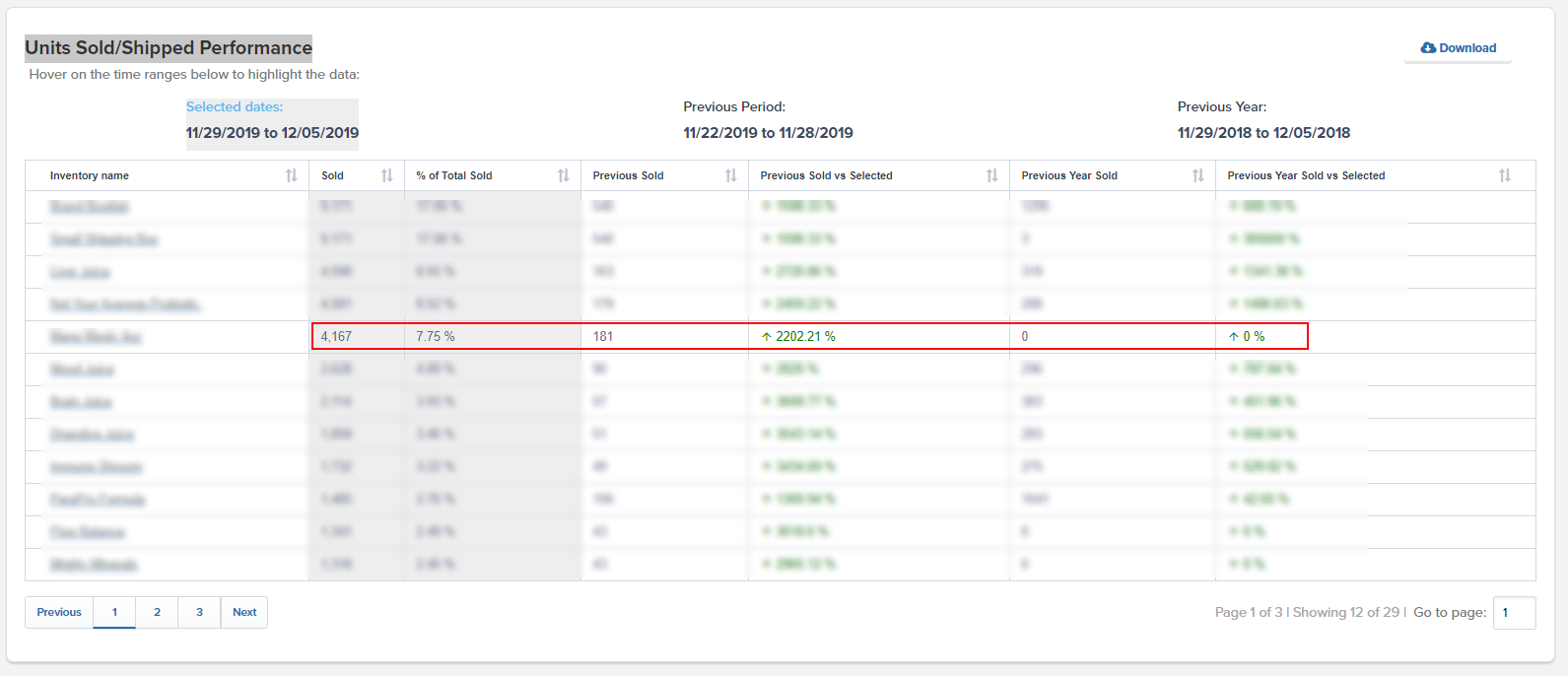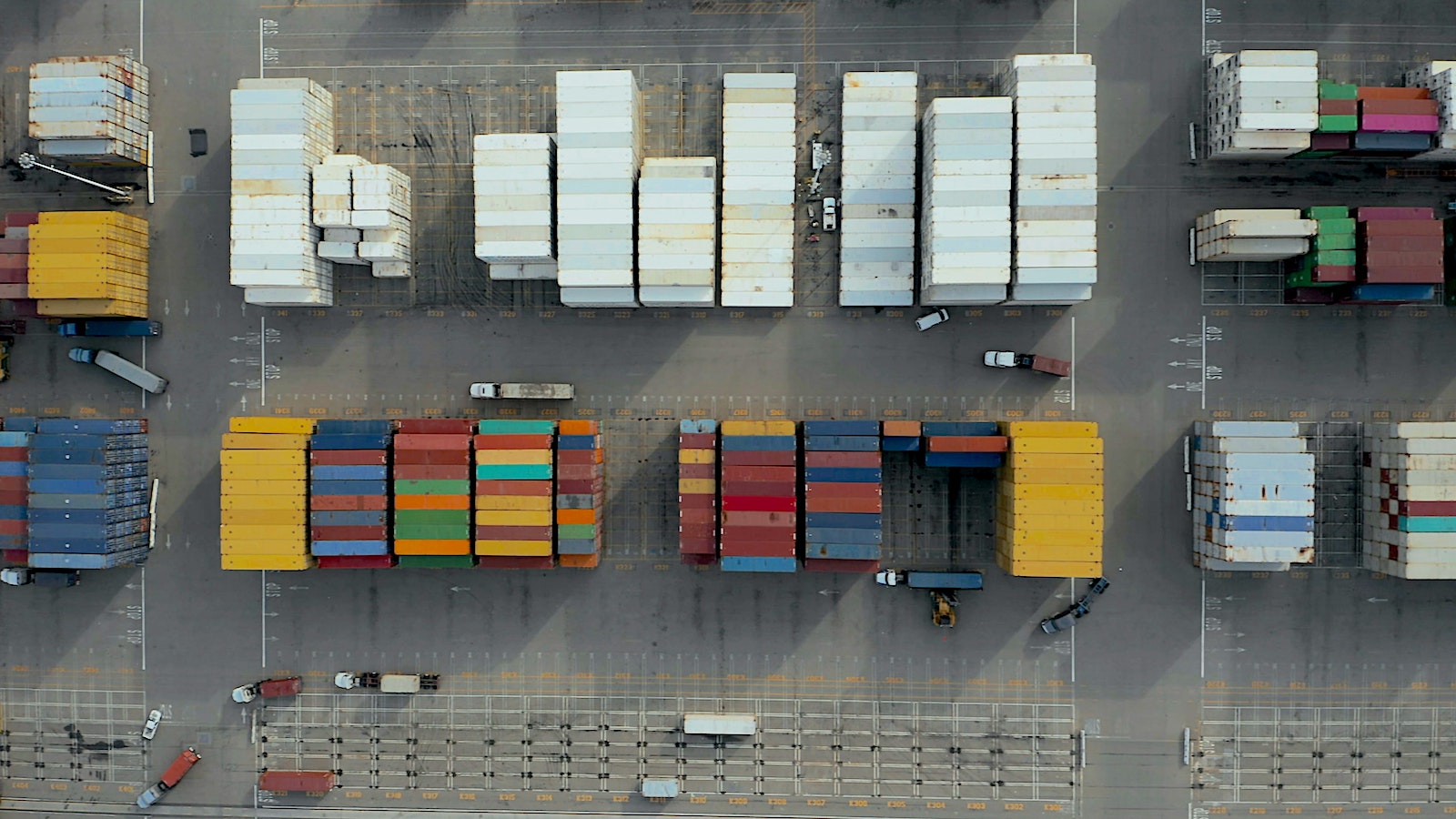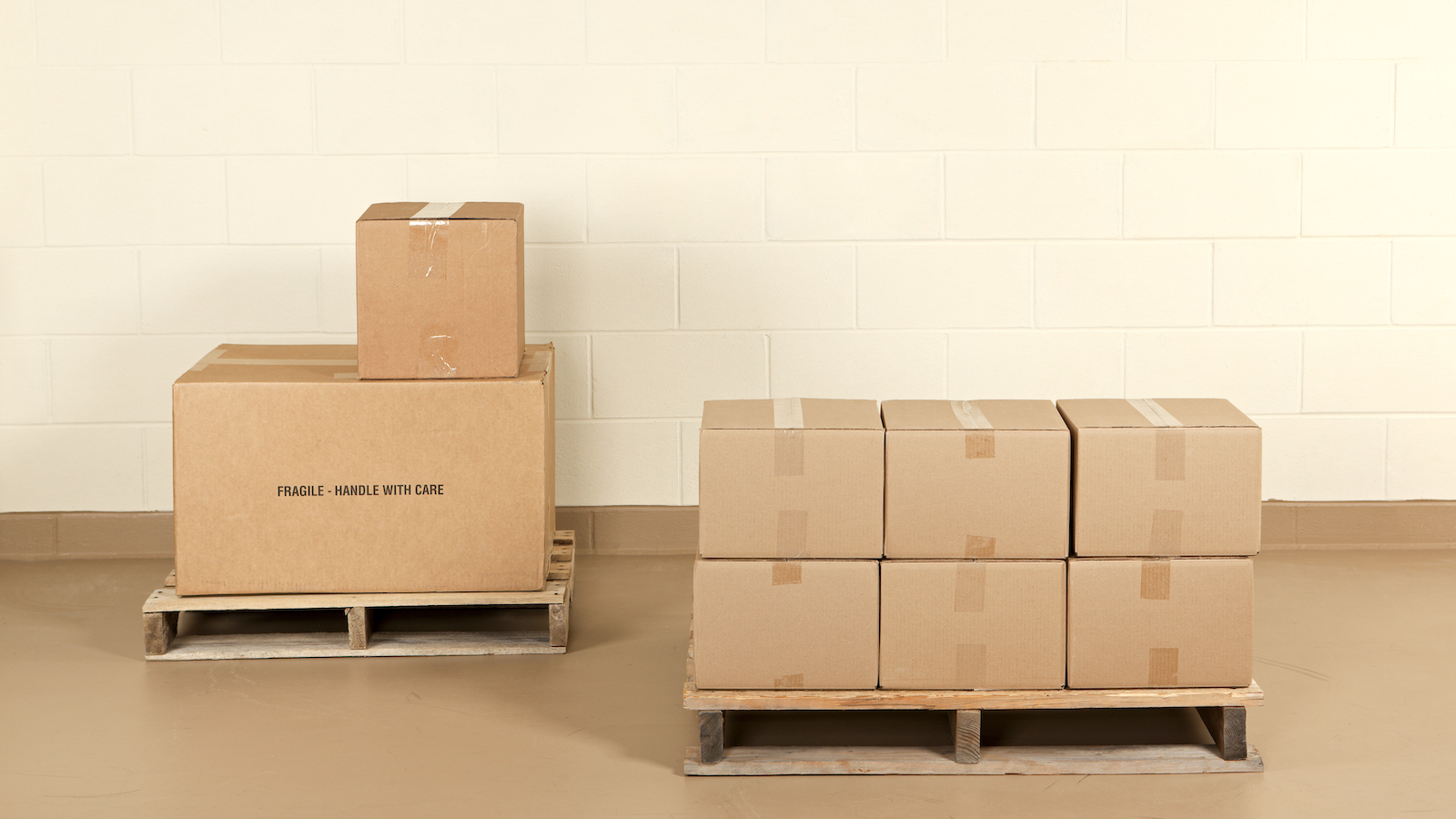Table of Contents
** Minutes
What is a multichannel distribution system?
Why are multichannel distribution systems important for ecommerce?
Challenges of multichannel distribution systems
How ShipBob streamlines multichannel distribution in 7 steps
Multichannel distribution system example
Picture this: You’ve launched your online store a little over a year ago, and you’re turning a profit and thriving — so why stop there?
Part of the beauty of running a business today is having the opportunity to sell across multiple sales channels to reach more customers and ultimately increase sales. You have the option to run an online store, a physical store, and sell on major marketplaces like Amazon, Walmart Marketplace, and even social platforms like Facebook, Instagram, and TikTok.
A multichannel distribution system, when established and managed properly, expands your customer reach and drives more sales. But without the right technology, tools, and resources, it can be hard to establish a multichannel distribution system that minimises costs and optimises profit.
In this article, you will learn:
- What a multichannel distribution is and how it works
- The challenges of running a multichannel distribution system
- How to implement a multichannel distribution strategy
What is a multichannel distribution system?
A multichannel distribution system refers to a sales and marketing distribution method that implements more than one channel or store to reach customers and increase sales.
Every multichannel distribution system is unique to the business, as it can include different channels such as an online store, one or more physical stores, social media platforms, and major online marketplaces.
Why are multichannel distribution systems important for ecommerce?
A benefit of running an ecommerce store is that you can launch into new markets through different channels with ease, which means you can diversity the type of customers you attract by having brand presence on the platforms they shop on.
Multichannel retailing is the future. 56% of shoppers are more likely to shop from an online retailer who offers a “start anywhere and finish anywhere” experience. Along with providing a better buying experience for customers, there are many reasons for businesses to consider a multichannel distribution strategy.
Here are some of the benefits of implementing a multichannel distribution system.
1. You’ll reach a wider audience
When you offer your products across several channels, you are more likely to reach a wider audience.
Different channels can help you diversify the type of customers you attract based on demographics and different buying behaviours. For instance, some shoppers prefer the in-person buying experience, whereas other shoppers spend a lot of time on social media, therefore are likely to make a purchase via a social app than in a store.
Selling through multiple sales channels not only helps you reach a wider audience, but it also provides an opportunity to diversify your product line and serve multiple demographics.
2. You’ll be open 24/7
Selling across multiple channels provides shoppers with 24/7 access to your brand.
By maximising your store’s hours, you dramatically increase the opportunities for purchasing by creating different touch points throughout the buyer journey. This means selling on multiple channels can also provide more marketing and brand awareness opportunities to keep your brand top of mind.
In other words, if a potential customer is not ready to purchase right away, shoppers can interact with and be exposed to your brand at any time – simply by expanding your presence across channels.
3. You’ll increase your revenue
By expanding into new channels, you will ultimately increase revenue and improve your bottom line. Whatever costs you incur from opening up new sales channels can be fully offset by the profit you garner from those new customers.
But in order to maximise profit, you will need to make sure that you have the tools, resources, and bandwidth to optimise your supply chain. More sales equals more time and money required to manage inventory, pick and pack orders, and ship packages.
Challenges of multichannel distribution systems
Multichannel distribution offers businesses a larger slice of the total addressable market (TAM) pie, but as you grow your business by expanding into new channels, internal operations becomes more complex.
Here are some common challenges of multichannel distribution.
1. Higher overall inventory costs
As you expand selling and marketing across several channels, you can expect higher costs related to warehousing, inventory management, and retail fulfilment.
It is still possible for businesses to make a profit, even with increased carrying costs, but with more channels, you will need to make sure that warehouse management is optimised with the the processes and technology that can help streamline and automate time-consuming tasks. By doing so, you can optimise costs to ensure poor logistics management isn’t cutting into profits.
2. Conflicting sales channels
With different sales channels generating orders, these channels can often be in conflict with one another. That means, it can be hard to optimise inventory levels and ensure the right amount of inventory is being accounted for in real time.
Unless all channels are synced with the same inventory management software, you run the risk that one or multiple sales channels will accidentally sell more products than you have in stock, which can result in backorders — and ultimately lower customer satisfaction.
To avoid inventory mishaps, you will need a multichannel inventory managementprocess that provides a full view of real-time inventory and order data across all sales channels to ensure that there is enough inventory to fulfil orders on time.
3. Complicated operational processes
As you expand into multiple channels, supply chain management can be a a full-time job. There is a lot that goes into logistics operations, from inventory management and order processing, to ensuring order accuracy during the picking and packing process.
Before establishing a multichannel distribution system, consider whether your business has the bandwidth to handle more than one sales channel, and if you can, simplify your operations by using an omnichannel fulfilment approach, which helps to ensure orders that come from multiple channels is being accounted for during the fulfilment process.
Multichannel distribution strategies for your store
While multichannel distribution is a business strategy in and of itself, there’s a lot of strategizing that goes into executing it. Once you expand into more channels, you will have to make sure you have the right tools, resources, and technology to optimise your multichannel distribution system.
Here are some multichannel distribution strategies to help you get started.
1. Choosing the right sales channels
From expansive marketplaces to social media platforms, you can practically sell anywhere these days, but that doesn’t mean every sales channel is right for you. Be sure to choose the right sales channels that offer the most opportunity for your business and won’t kill your margins because of the associated fees (though some brands raise product prices on certain channels for this very reason).
Before you commit to a new sales channel, consider the type of customer you want to attract and decide where your ideal customers shops online (and how they shop).
Next, think about whether the product and the sales channel match each other appropriately and whether your customers would be interested in buying your product through that sales channel.
For instance, for everyday essentials, shoppers tend to go directly to Amazon so they can easily find what they need at the lowest price and get it quickly. Note: They often search for the product category and not your brand specifically, so they may believe they are buying from Amazon and not your brand.
Let’s say you sell health, beauty, and wellness products. In this case, you might want to consider social platforms like Instagram and Pinterest. These social media sites are very visual and give you a chance to interact with your customers during the selling process, while showing off your products in the best light, using eye-catching visuals, video tutorials, and more.
2. Centralise your omnichannel data
With so many sales channels connected to your online store and/or inventory management system, it’s important that you have a single source of data that helps you make better informed decisions, such as where to allocate inventory, how much, and when.
ShipBob is a third-party logistics (3PL) provider that allows merchants to sync multiple sales channels to ShipBob’s technology, which aggregates inventory and order data from multiple channels all in one place.
It can be a challenge to track inventory and order data across different channels, which is why many multichannel brands partner with 3PLs like ShipBob to leverage the right technology to streamline omnichannel data and have one distribution partner pack and ship all those orders.
“We’re currently fulfiling all of our B2B and DTC orders through ShipBob. It’s been a massive help for us to kind of centralise all of that, especially going into 2022.”
Nathan Garrison, Co-Founder and CEO of Sharkbanz
3. Choose a 3PL that easily integrates with your online store and other sales channels
Keeping up with orders that come in through your online store is one thing, but keeping track of orders that come through multiple channels can be challenging.
If you’re looking to expand into multiple sales channels, consider partnering with a 3PL company like ShipBob that can help you optimise your supply chain.
With ShipBob, you can easily sync your online store and other sales channels to our fulfilment software. From there, you can ship inventory in one or more fulfilment locations across the US (and globe).
ShipBob helps fulfil not only website orders but also has a B2B Fulfilment Suite and EDI capabilities, enabling merchants to sell throughout the entire B2B ecosystem, powering retail dropshipping (fulfiling orders placed on big box retailers’ websites) and wholesale shipping (including brick-and-mortar stores), which can connect with all the major retailers.
No matter where the point of sale is made, as soon as an order is placed, it is sent to the closest fulfilment centre to be fulfiled and shipped.
“Direct-to-consumer makes up the vast majority of our orders at this point, but ShipBob also helps with our B2B needs. We offer products though Whole Foods in the Northeast and are looking to expand our wholesale channels.”
Michael Peters, VP of E-Commerce Operations at TB12
4. Optimise your order fulfilment process
With new channels that are now connected to your online store, it’s important that you have a fast order fulfilment process that you can rely on.
Opening up new channels will inevitably increase your order volume and potentially even double or triple it — so take the steps needed to bulletproof your fulfilment process to prepare for a higher order volume.
ShipBob automates much of the fulfilment process and aggregates real-time inventory, order, and shipping data on one dashboard. This keeps our ecommerce fulfilment processes efficient and consistent, while also offering merchants full visibility into the process. Each step is directed by information that is automatically populated in the dashboard when an order is submitted.
“Logistics is something you never think about until it stops working, and we’ve never come to that point with ShipBob. Everything just works. We are super happy with ShipBob and very impressed by how well they’ve pumped out our large volume of orders.”
Sergio Tache, CEO of Dossier
With ShipBob, you can also further enhance logistics and expand your supply chain by easily integrating other ecommerce solutions, from inventory planning to returns management tools with our technology to create an end-to-end ecommerce solution.
How ShipBob streamlines multichannel distribution in 7 steps
ShipBob’s robust logistics solutions makes it easy for ecommerce businesses to implement a multichannel distribution system. Our fulfilment technology integrates with all major ecommerce platforms and offers several integrations with other major sales channels, as well as B2B fulfilment capabilities.
In fact, ShipBob is the only 3PL provider that integrates with Facebook, and we also integrate with other popular multichannel programs like Google Shopping.
ShipBob makes it easy to connect multiple sales channels. Here is a step-to-step overview with links to learn more with visuals in ShipBob’s Help Centre, including sales channel-specific setup steps.
Step 1: Connect your first store
To connect your first store to ShipBob, simply open your ShipBob dashboard and click on ‘Quick Setup.’ From there, click ‘Store Integration’ and select the store you want to integrate. You can also browse the ShipBob App Marketplace under the ‘Integrations’ tab.
Step 2: Sync your products
After connecting your online store, you’ll want to sync all of your products to ShipBob’s dashboard, so that ShipBob can track and fulfil them.
To do this, simply click on ‘Quick Setup’ on your ShipBob dashboard, select ‘Sync Your Products,’ and put a checkmark by every store whose products you want ShipBob to sync.
Step 3: Sync your orders and inventory
The next step is to sync your online store’s orders to your ShipBob dashboard, so that ShipBob can fulfil them as soon they come in. Here are the steps:
- To sync orders manually, go to the ‘Orders’ tab on your ShipBob dashboard, then click on ‘Sync Orders.’
- Click on the ‘Fetch Orders’ button for your store integration.
- Checkmark the boxes next to the orders you would like to sync; orders highlighted in green have already been imported.
- Once you finish, click ‘SHIP IT.’ To sync orders automatically, click on ‘Quick Setup,’ then click on ‘Account Settings.’
- Check the ‘Fetch Orders Every 2 Hours’ box for each store integration, and click ‘Save.
You can follow steps 1 through 3 to integrate other sales channels as needed with the store-specific steps.
Step 4: Merge any identical SKUs
To avoid having the wrong inventory counts and total SKUs due to double (or triple) counting the products available to buy from multiple sales channels, you will need to merge any identical SKUs that were imported into ShipBob.
To merge identical SKUs, click on ‘Inventory,’ and then click ‘Products.’ Select products to be merged by marking the checkbox next to the item name.
Then click on the green ‘Actions’ button and choose ‘Merge Items’ from the drop-down list. Review and confirm the items to be merged. Click ‘Yes’ to confirm.
Step 5: Send ShipBob your inventory
With your store(s) fully synced to ShipBob, it’s time to send ecommerce inventoryto one of ShipBob’s fulfilment centres.
To send inventory to ShipBob, start by creating a Warehouse Receiving Order (WRO), a form that provides all the details needed when we receive your inventory.
Select the fulfilment centre you want inventory shipped to, the items you want shipped, the shipping type and configuration, and the estimated date of arrival.
Attach the correct WRO to each box of inventory and send to the designated ShipBob fulfilment centre location.
Steps 6: Have orders automatically fulfiled
With steps 1 through 6 completed, any orders that come through one of the channels is automatically sent to ShipBob to be processed, picked, packed, and shipped. You can view and track order status across channels in real time all from the ShipBob dashboard.


“When I was gearing up to launch the business, I was looking for someone who would automate fulfilment for us.
I chose ShipBob, and it turned out to be a very easy and scalable solution. Everything was automated, from setting up my store, to sending product, to fulfiling orders.
It was pretty remarkable how a 24-year-old like me with very little money and no prior logistics experience could launch a product and have distribution be automated.”
Josh Hollings, Founder & CEO of Drop FX
Step 7: Optimise physical distribution
ShipBob makes it easy to decide how to optimise physical distribution across our fulfilment network using the advanced data and analytics reporting tool.
Using historical sales data and order origin mapping, ShipBob gives you the insights you need to optimise inventory distribution to enable faster shipping, lower logistics costs, and improve customer satisfaction
By tracking physical distribution order data, you get answers to the following questions:
- How should I distribute my inventory across ShipBob’s fulfilment network?
- What would my shipping costs be if I went from one fulfilment centre to two (or two to three, and so on)?
- How many days of inventory do I have left before I run out?
- What is my SKU performance over time?
- What are my best-selling items?
- How often is each product sold across channels?
- If I run a sale on my site, how will this affect my available inventory levels?
- How does product demand compare to previous periods?
- How are my sales affected by different seasons and months?
- Where are my customers shipping to most often?
- And much more.


“We strive to be very data-driven, and ShipBob gives us access to different views of our business. Their analytics tool has been great to have. We can see inventory reconciliations and easily view SKU velocity, transit times, and inventory distribution recommendations.”
Pablo Gabatto, Business Operations Manager at Ample Foods
ShipBob also offers inventory forecasting functionality to determine how much inventory you need to order and when.


Multichannel distribution system example
When eco-friendly personal care product brand Boiecame to ShipBob, they needed help scaling fulfilment operations to meet a high demand after a successful crowdfunding campaign.
With ShipBob as their 3PL, they’ve been able to smoothly sail through three holiday seasons and continue to grow across multiple channels, as well as introduce new products.
“We want to continue to become a more multichannel brand and work with bigger retailers. We’ve done some B2B orders with ShipBob, including Urban Outfitters, and now we’re in talks with some larger wholesale accounts. We’re also testing subscription box partnerships.”
Manuel de la Cruz, CEO of Boie
Final words
As your business grows, don’t let fear of the complexities of multichannel distribution logistics hold you back from the modern market or prevent you from seizing market share.
If you’re looking to expand into new sales channels but need help establishing a multichannel distribution system, ShipBob can help.
By partnering with ShipBob, you can easily streamline order fulfilment across multiple sales channels, track inventory in real time from a single dashboard, and save time and money by leaving logistics up to the experts.
To learn more about how ShipBob can help grow your business, click the button below.
Multichannel distribution FAQs
Establishing a multichannel distribution system is undoubtedly challenging — especially if this is your first time branching into new sales channels. Here are answers to some of the most common questions about multichannel distribution.
What is multichannel distribution?
Multichannel distribution is a system of one or more sales and/or marketing channels that retailers sell their products on to expand their customer reach.
What are the advantages of multichannel distribution systems?
Multichannel distribution systems come with several advantages. Multiple sales channels allow business owners to reach more customers 24/7. By expanding into multiple sales channels, you’re able to improve brand awareness and get in front of new audiences that otherwise wouldn’t find you, increase sales, and improve the customer buying journey.
How can 3PLs help streamline multichannel distribution?
The more sales channels you expand into, the more complex the fulfilment process will be. 3PLs can simplify multichannel distribution in a variety of ways. For example, leading 3PL ShipBob allows merchants to easily sync their online store and multiple sales channels to streamline the ecommerce fulfilment process, including real-time inventory tracking across your supply chain.
Why is multichannel distribution important?
Today, your customers expect your products to be available wherever they are — so whether your business is ready for it or not, multichannel distribution is becoming a critical and necessary step in staying competitive in ecommerce. So in addition to increasing sales and diversifying your customer base, opening up new sales channels helps keep your brand on top of mind.



